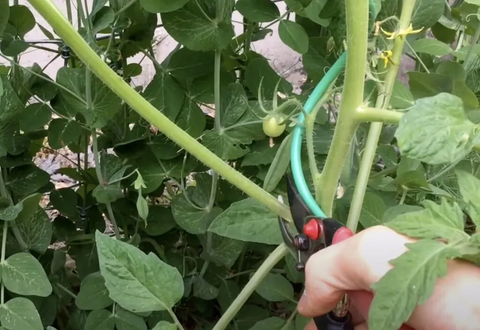The Spotted Lanternfly (Lycorma delicatula), also known as SLF, is a misleading name because this invasive insect is a planthope, not a fly. It is native to China, India and Vietnam and first appeared in Pennsylvania in September 2014, from where it spread to six other states. Since the Lamplight fly can only fly short distances, mostly jumping or walking, human activities are mainly responsible for transporting it over large areas.The following content also has some reference value for raised garden beds.
At all stages, from egg colonies to nymphs to adults, butterflies can hitch rides on trees, plants, bricks, stones, firewood, building materials, patio furniture, vehicles, children's swimming pools and equipment such as lawn mowers - almost any outdoor object with a hard solid surface.

The mouth parts of the spotted Lanternfly can penetrate the phloem of plants and feed on the sugary juices. It attacks all kinds of trees, fruits, especially grapes and ornamentals, causing serious damage to them if not killing them. Its preferred host is the invading Tree of Heaven.
Staging and identification of Lanternfly spotted
In order to effectively combat the spotlight fly, it is essential to understand its life cycle. It consists of four nymph stages, adult stages and overwintering egg groups. Only one generation per year.
Between September and November, adult females lay their eggs on a variety of hard surfaces, such as tree trunks, decks, house siding, outdoor furniture, or rocks. Each egg ball contains 30 to 50 eggs and is topped with a waxy lid that is initially light gray but looks like dry mud over time.
The egg mass remains until May or June of the following year, when the nymphs begin to hatch, a process that can last up to two months. After about a month, these first-instar nymphs, which are about a quarter of an inch long, molt into a second instar, and after another month, into a third instar. All nymphs of the first three instars are black with white spots.
In the fourth and final stages, between July and September, the nymphs, about three-quarters of an inch long, are red in addition to their white spots.
The adults are about an inch long and hatch from the nymphs in mid-summer to late summer. They begin to mate in late August and lay eggs in October. The spotted Lanternfly remains active until the first severe freeze in November or December, killing the adults. However, the egg colonies are still viable and will continue their life cycle next year.

Only adults can fly, and their red underwings are visible only when they are about to take off. But even when they rest and their wings are folded, the spotted Lanternflies are easy to recognize because of the black spots on their wings, which are dull pinkish-brown.
Is the spotted Lanternfly in my state?
Spotted Lanternflies are currently found in six states where they are quarantined: Delaware, Maryland, New Jersey, New York, Pennsylvania and Virginia. Isolation means that at any stage of the insect's life cycle (eggs, nymphs or adults), the movement of any material or object that may harbor an insect is prohibited, or permission is required. If you are located in one of the six affected states, click on the link above to get the latest information from that state's Department of Agriculture.
Signs of SLF infection
The stress caused by the spotted Lanternfly's feeding on plants, combined with the collateral damage caused by feeding, can severely damage or kill plants.
Nymphs and adults draw large amounts of sugary SAP directly from the phloem of leaves, stems, branches, and trunks. First - to third-instar nymphs also feed on the shoots of plants, while fourth-instar and adult nymphs also have mouths strong enough to attack older plant tissue.
After eating the SAP, the spotlight fly excretes excess sugar in the form of honeydew onto anything beneath it - including vegetation, vehicles, decks, garden furniture, and even pets and clothing. The sticky surface is soon covered with smoke mold, a black fungus. The spotted Lanternfly does not eat fruit, but the sooty mold makes the fruit unfit to eat.
Affected plants may exhibit water seepage, wilt, leaf litter, and dieback until the plant dies. Plants infested by spotlights are also more susceptible to other pests.
How to prevent and eliminate the spotted lantern fly

The first step is to make sure you're not bringing spotted Lanternflies into your yard. Carefully examine any insect from the SLF quarantine area to check for its nymph or adult stage or egg mass.
Whenever you find egg globs, scrape them off, even on the coldest of winter days. Any stiff scraper or putty knife will do. Scrape down and grab a container underneath to hold the egg. To kill the eggs before throwing them in the trash, pour some rubbing alcohol or hand sanitizer over the eggs.
Remove any sky tree (Ailanthus altissima) immediately, as it is the preferred host of the spotted Lanternfly.
Tree banding is an option that limits the movement of nymphs as they climb up and down tree trunks to feed. Special sticky traps can be purchased from garden supply companies. Place them at chest level with the sticky side taped to the outside and replace them every two weeks until the end of July.
Pesticides are not recommended to control butterflies, as they kill beneficial insects indiscriminately. This also applies to systematic insecticides, which are sometimes used with sky trees as trap trees. Systemic insecticides move through plant tissues, killing insects when they feed on plants.









